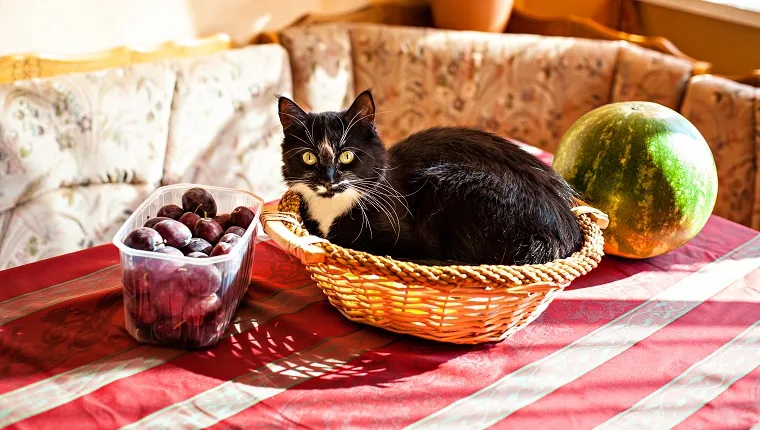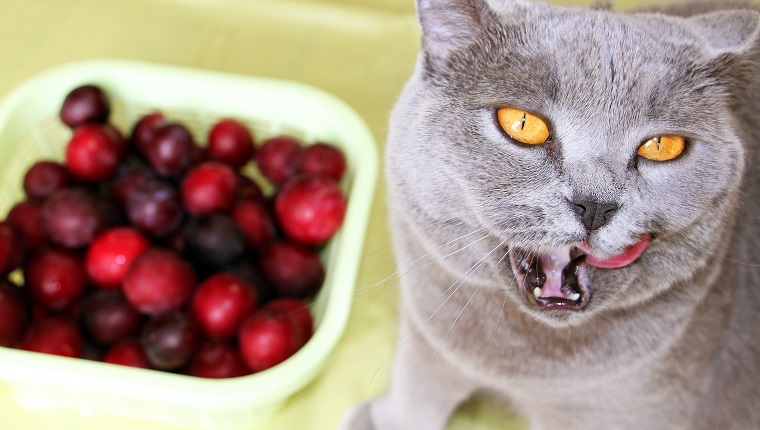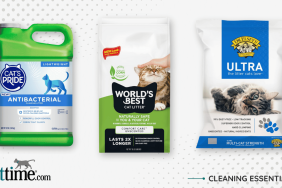Can cats eat plums? You might have wondered if you can share a bite with your cat while enjoying some fresh plums as part of a healthy and refreshing snack. If humans can eat plums, can cats also safely eat them?
The short answer is no, cats can’t safely eat plums. Most parts of the plum plant, including the seeds, are highly toxic to cats due to the presence of cyanide. In some cases, eating plums can be fatal for a cat.
Here’s what you need to know about plums and cats.
Why Are Plums Bad For Cats?
According to the American Society for the Prevention of Cruelty to Animals (ASPCA), most parts of the plum plant are toxic for cats. “Stems, leaves, seeds contain cyanide,” the organization’s website explains.
The ASPCA adds that plums become “particularly toxic in the process of wilting.”
If your cat manages to eat toxic parts of a plum or a plum plant and the poisons make their way into the bloodstream, some of the most common symptoms include:
- Pupils dilating
- Breathing problems and panting
- Going into shock
- Mucous membranes turning red
In addition to plum poisoning, the pit of a plum can also prove to be a dangerous chocking hazard for many cats.
What Should I Do If My Cat Eats Plums?

First of all, it’s important to try and work out exactly which parts of a plum or a plum plant your cat has managed to eat.
The ripe flesh of a plum itself isn’t necessarily toxic to cats, but if your cat consumed the pit, the stem, the leaves, or even parts of a plum plant’s roots, it’s imperative that you call an emergency veterinarian straight away.
If you are advised to bring your cat into a veterinarian’s office because they suspect a case of plum poisoning, it can be helpful to bring along samples of any plums or plum plants that they have eaten, along with a small amount of any of their vomit.
Using a process known as trocarization, which involves using fluids from the cat’s stomach to test for toxins, your vet will be able to work out the extent of any plum poisoning that might have set in.
Depending on the severity of plum poisoning, your vet might recommend the use of sodium nitrate to help negate the cyanide. This procedure is carried out intravenously. Any ensuing steps and procedures will depend on the levels of cyanide that your cat has ingested.
Has your cat ever snacked on some plums? Did they feel sick afterward? Let us know in the comments below!









